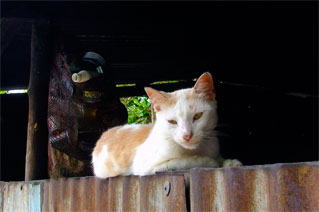


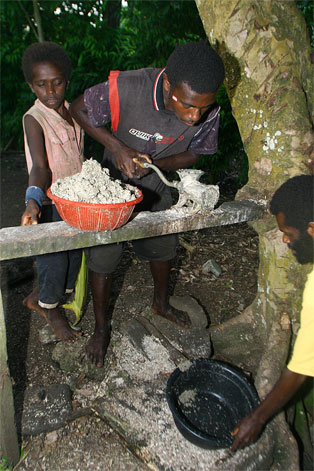

- Three – four bowls like this will suffice for a grown man, he ensures us. A cheap and simple way of getting high, in other words.
To be drank in darkness
Kava is better enjoyed in special, designated places called “nakamal”. We are at ”Ronnies Nakamal” in the capital Port Vila. We have been told that “Ronnies” is the best in town, and the place is already crowded when we arrive, even though it is only a regular Tuesday afternoon. Kava is supposed to be drunk after nightfall, as your eyes go very light sensitive, and the kava experience is more intense in darkness. It is also supposed to be quiet, and neither music nor loud voices are heard among the roughly 50 people sitting around tables and talking to each other quietly. The age limit for drinking kava is 18 years. In earlier times, kava drinking was an exclusively male activity, but today also women enjoy kava drinking. A bowl of kava costs roughly 50 pence in Vanuatu. Many isolated tribal communities are still hunter-gatherer societies, who base themselves mainly on natural household. For these, kava production is the only way they can make some money to pay for school books, medicines and other necessities of life.
- Many people drink kava every night. In the long run, this is unfortunate, you can acquire stomach problems and a characteristic skin disease. In addition, you can grow apathic and lose your ability to focus, says MacClory. He works as an architect, and declares that he tries to limit his kava drinking to 2-3 times a week. People from all walks of life gather in the nakamals in Port Vila every night after sunset.
# Kava is made by the root of a pepper pland by the Latin name of Macropiper Methysticum. It grows on most of the islands in the tropical part of the Pacific, in countries like Samoa, Tonga, Vanuatu and Fiji.
# The strongest kava is made by squishing the freshly cut roots from the bush and twist the juice out of them, as done in Vanuatu. Kava is not addictive, but regular use can give stomach problems and a characteristic skin disease.
# Earlier, kava was a drink for special occasions. If you are invited to drink kava, feel honoured and say yes, because it is a formal welcome and sign of acceptance.
# Kava drinking is mainly a male activity, connected with numerous taboos. In some Southern Pacific kingdoms, kava was so sacred that women were punished with death if they accidentally witnessed a man drinking it. Today, most islands have places where also women are welcome, and many local chieftains make no distinction between men and women as guests.
# Vanuatu authorities estimate that approximately 2,000 tons of kava are produces in Vanuatu.
(Sources Sydhav.no, Zine travels, Vanuatu National Statistics Office)
- It is vital to only drink kava on an empty stomach, for maximum effect, he says and empties an entire bowl, smilingly.

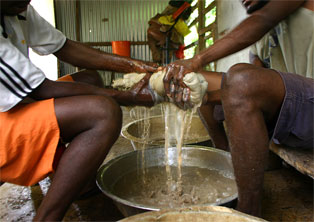
Fresh produce
The production of kava is a labour-intensive, but uncomplicated process. The kava tree is cut down, and only the roots are usable for kava. These are cut into little pieces and laid out to dry for a couple of hours, before being grinded in a meat grinder to a porridge called “makas”. This is mixed with a certain amount of water and left to stand for half an hour. The kava now looks like brown wallpaper glue, and smells like old sawdust. Then it is filtered through a piece of cloth, for instance a coarse piece of womans panties. The fluid coming through the filter, is kava ready for consuming.
- Kava is a fresh product. It has to be consumed the same evening as it was made. The next day it is to bitter by taste, and has lost its effect. It is also important to drink kava on an empty stomach, and drink every bowl straight down, to get the maximum effect, MacClory explains. Seven kilos of root material is mixed with ten liters of water and makes 13 liters of kava. The leftovers from this process can be used one more time, but this kava will have a weaker effect.
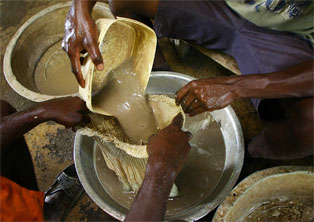
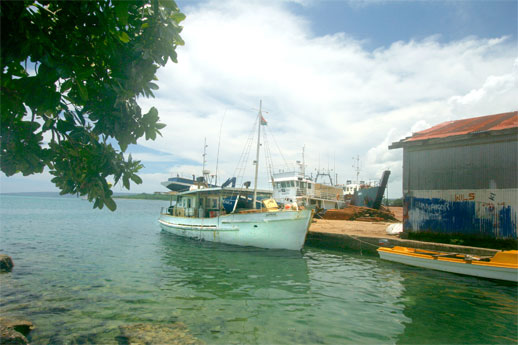
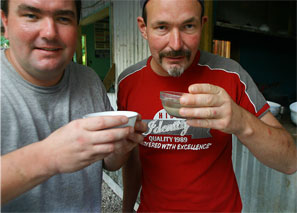
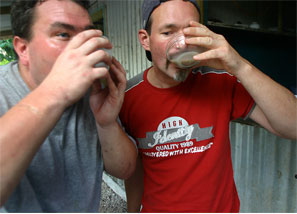
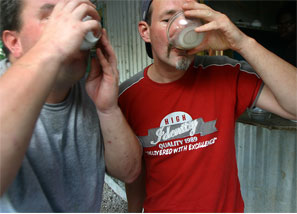
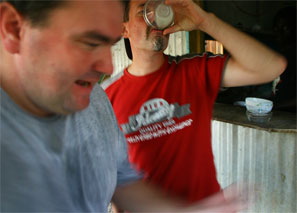
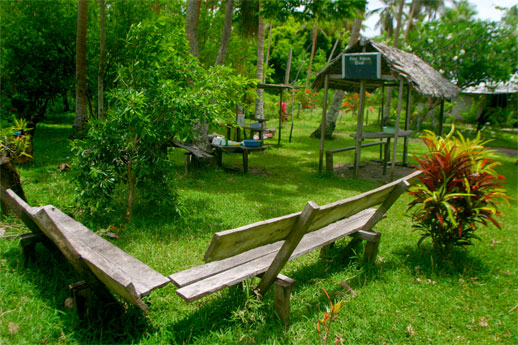

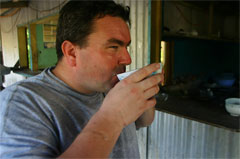


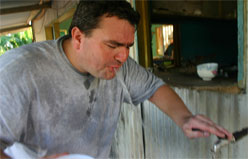
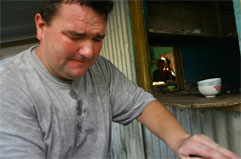
Export article
Kava is big business in Vanuatu, and no one knows exactly how much is produces every year for domestic use. In 2008, around 450 tons of kava was exported, mainly to Fiji, the USA and New-Caledonia.
- Kava is a very important export article for us. Before, also Germany constituted a major market for us. But in 2002, they banned kava imports, after people had reported health problems, says statistics consultant Harry Nalau at VNSO, Vanuatus National Statistics Office. Later, it was discovered that this was due to some kava having been imported from Fiji, and where one had mixed in some poisonous bark. Kava is still very popular in the USA, where it is used as a nerve medicine and tranquilizing medicine. Several international companies are researching kava to find out how to isolate the narcotic substance from the kava and utilize them in production of pills.
- When the ban was introduced in 2002, the consequences for Vanuatus local economy were grave, Nalau explains. He hopes that demand will rise again soon.
- The kava price has quadrupled in recent years, and Vanuatu has increased its growth of kava trees. So in a year or two, we will have large quantities ready for production for the export markets, he says hopingly.




